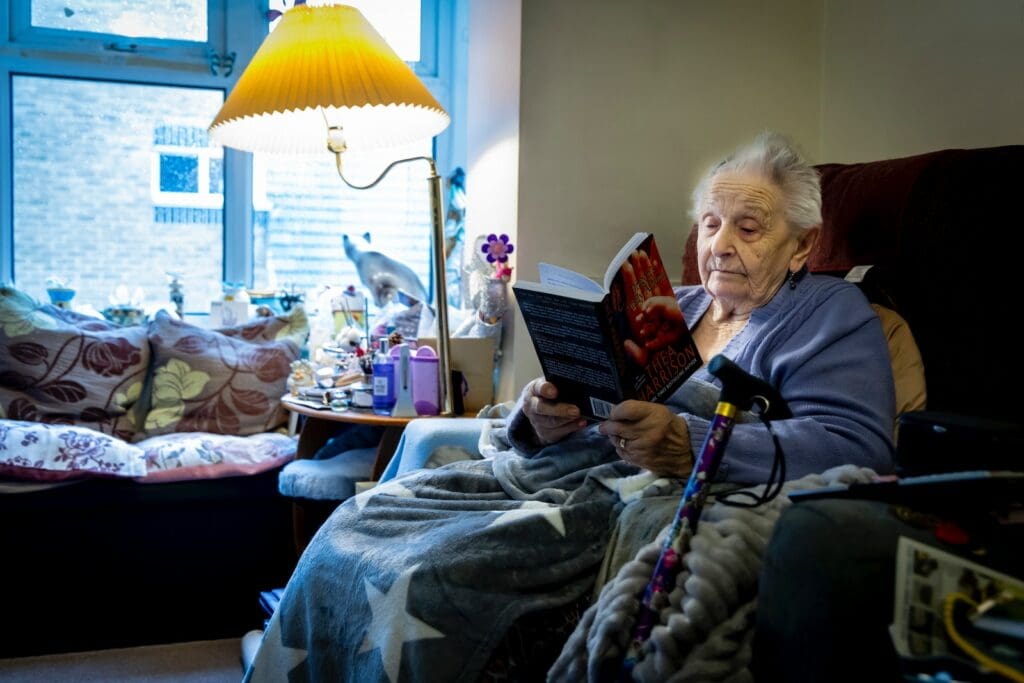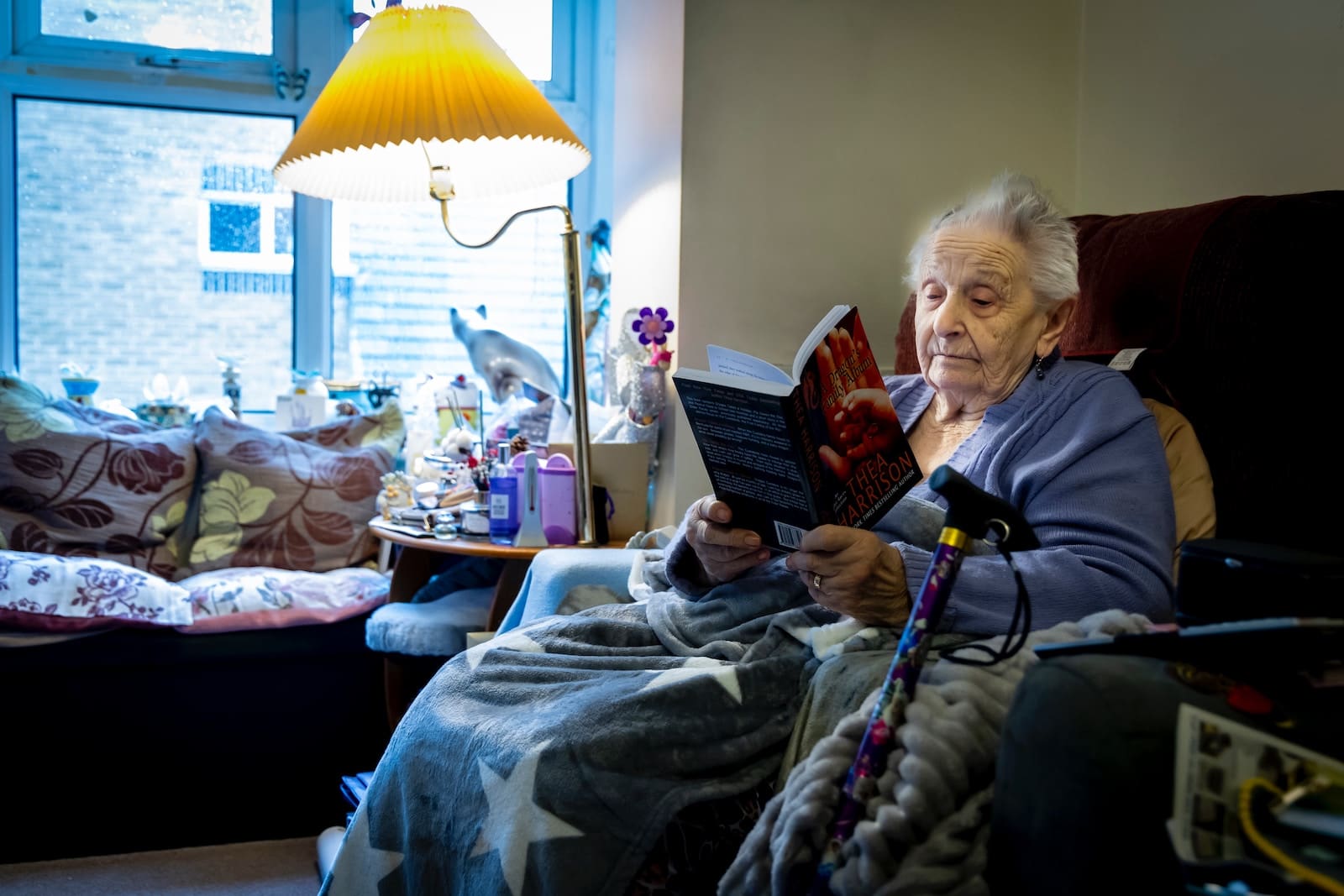
Creating a Safe and Comfortable Living Environment
As people age, they may face physical and cognitive limitations that make it difficult for them to perform daily tasks. However, many seniors prefer to continue living independently at home rather than moving to assisted living facilities. Aging in place is a popular option for seniors, but it often requires modifications to the home to ensure safety and accessibility.
Home modifications can range from simple changes like installing grab bars and non-slip mats to more complex renovations like widening doorways and installing stairlifts. Making these modifications can help seniors maintain their independence and improve their quality of life. However, it can be overwhelming to know where to start and what modifications are necessary. This article will provide tips and guidance for seniors and their loved ones on how to modify their homes for aging in place.
Understanding Aging in Place
Aging in place is a growing trend among older adults who want to maintain their independence and live in their own homes for as long as possible. It involves making modifications to the home environment to make it safer and more accessible for seniors.
The goal of aging in place is to allow older adults to remain in their homes and communities, rather than moving to assisted living or nursing homes. This can help seniors maintain their sense of independence and control over their lives, while also reducing the financial burden of institutional care.
There are many benefits to aging in place, including improved quality of life, increased social connections, and reduced risk of depression and other mental health issues. However, it is important to note that aging in place is not always feasible or safe for everyone.
To age in place successfully, seniors need to have access to appropriate support services, such as home health care, transportation, and social activities. They also need to be able to navigate their homes safely and easily, which may require modifications such as installing grab bars, widening doorways, and removing tripping hazards.
Overall, aging in place can be a viable option for many older adults who want to maintain their independence and continue living in their own homes. With the right modifications and support services, seniors can enjoy a safe and fulfilling life in their golden years.
Identifying Home Hazards
As seniors age in place, it is essential to identify and address potential home hazards to prevent falls and injuries. Hazards can include anything from cluttered floors to poor lighting and slippery surfaces.
One of the most significant fall risks for seniors is tripping hazards. These can include loose rugs, electrical cords, and cluttered floors. To prevent falls, it is essential to keep floors clear of clutter and secure any loose rugs or carpets with non-slip backing.
Another common hazard is poor lighting. Seniors may have difficulty seeing in dimly lit areas, which can increase the risk of falls. It is essential to ensure that all areas of the home are adequately lit, especially stairways, hallways, and entryways. Installing nightlights in the bedroom and bathroom can also help prevent falls during nighttime trips to the bathroom.
Bathrooms can also be a significant source of hazards for seniors. Slippery surfaces, such as wet floors and shower stalls, can increase the risk of falls. Installing grab bars and non-slip mats in the shower and bathtub can help prevent falls and provide additional support.
In summary, identifying and addressing potential home hazards is crucial for seniors aging in place. By taking steps to prevent falls and injuries, seniors can maintain their independence and continue to live safely in their homes.
Essential Home Modifications
For seniors who want to age in place, there are several essential home modifications that can make their living space safer and more comfortable. Here are some of the most important modifications to consider:
1. Bathroom Modifications
The bathroom can be a dangerous place for seniors, with slippery floors and hard surfaces. Installing grab bars near the toilet and in the shower or tub can help prevent falls. Adding a shower seat and a handheld showerhead can also make bathing easier and safer. Non-slip mats or decals can be added to the floor of the shower or tub to prevent slipping.
2. Kitchen Modifications
The kitchen can also be a hazardous place for seniors, with sharp knives, hot surfaces, and heavy pots and pans. Installing pull-out shelves and drawers can make it easier to access items in cabinets. Lowering the height of countertops and sinks can make it easier to reach and use them. Installing a wall oven and cooktop can eliminate the need to bend down to use the stove.
3. Lighting Modifications
Good lighting is essential for seniors who want to age in place. Installing brighter bulbs or adding additional lighting fixtures can make it easier to see and navigate around the home. Motion-activated lights can also be installed in hallways and other areas to provide additional safety.
4. Mobility Modifications
For seniors with mobility issues, home modifications can make a big difference. Installing a stair lift or ramp can make it easier to navigate stairs. Adding handrails to stairways and steps can also provide additional support. Widening doorways and hallways can make it easier to maneuver a wheelchair or walker.
5. Safety Modifications
In addition to the modifications listed above, there are several other safety modifications that can make a home safer for seniors. Installing smoke detectors and carbon monoxide detectors can provide early warning in case of a fire or gas leak. Adding a security system can provide additional peace of mind. Installing a medical alert system can also be helpful in case of a fall or other emergency.
By making these essential home modifications, seniors can age in place more safely and comfortably.
Bathroom Modifications
Bathroom modifications are essential for seniors who are aging in place. According to AARP, installing a walk-in shower can help avoid falls. Placing a shower chair or bench in the shower can also make bathing easier and safer. Swapping out a showerhead for a handheld nozzle can enable sitting while rinsing off.
Another important modification is installing grab bars on the shower wall and near the toilet. These bars provide support and stability when standing up or sitting down. Replacing glass shower enclosures with non-shattering material can also prevent accidents.
Raised toilet seats can make using the bathroom more comfortable for seniors with mobility issues. These seats are available in different heights and can be easily installed.
It’s important to ensure that the bathroom is well-lit and has non-slip flooring. Installing non-slip bath mats with rubber backings and non-skid rubber mats or strips in the tub can also prevent slips and falls.
Overall, bathroom modifications can greatly enhance the safety and comfort of seniors who are aging in place.
Kitchen Modifications
The kitchen is one of the most important rooms in the house, and it is essential to make sure it is safe and accessible for seniors. Here are some kitchen modifications that can help seniors age in place comfortably.
Counter Height
Seniors may find it difficult to reach high cabinets, so it is important to lower the counter height. Lowering the counter height can make it easier for seniors to prepare meals and access items on the counter. A professional contractor can come in and adjust the counter height to allow for easier access from a seated position.
Sink
Seniors may also find it difficult to use the sink, especially if it is too high. Lowering the sink can make it easier for seniors to wash dishes and prepare food. A sink with a single lever faucet is also easier to use than a traditional two-handle faucet.
Appliances
Seniors may find that their appliances are no longer in ideal locations and that their countertops and cabinetry are too high, especially if they are in a wheelchair. A professional contractor can come in and adjust the counter height and lower the sink to allow for easier access from a seated position.
Lighting
Good lighting is essential in the kitchen to prevent accidents and falls. Seniors should have bright, even lighting that eliminates shadows and makes it easy to see what they are doing. Under-cabinet lighting can also be helpful to increase visibility.
Flooring
The kitchen floor should be slip-resistant to prevent falls. Seniors should avoid rugs or mats in the kitchen, as they can be a tripping hazard. A smooth surface, such as vinyl or linoleum, is a good option for kitchen flooring.
Storage
Seniors should have easy access to frequently used items in the kitchen. Pullout shelves, Lazy Susans, and drawers can make it easier to reach items in the back of cabinets. A pullout pantry is also a good option, as it allows seniors to see everything at a glance without having to shuffle items around.
Location
The kitchen should always be located on the ground floor of the property. If it is on another level, seniors may want to consider a change because of the amount of time spent there and the activity of daily living (ADL) that occurs there.
Making these kitchen modifications can help seniors age in place comfortably and safely. A professional contractor can help with the installation of these modifications.
Mobility Enhancements
Mobility is a crucial aspect for seniors aging in place. As people age, their mobility can decrease due to various reasons such as arthritis, stroke, or other medical conditions. Therefore, it is important to make necessary modifications to enhance mobility and make daily activities easier and safer.
One of the most common mobility enhancements is the installation of ramps. Ramps can help seniors with mobility issues to move around their homes more easily. They can be installed at the entrance of the house, or at the entrance of each room. Ramps can be made of different materials, such as wood, metal, or concrete, and can be permanent or temporary.
Another popular mobility enhancement is lifts. Lifts can be installed to help seniors move between floors safely and easily. Stairlifts are a type of lift that can be installed on staircases. They are designed to carry people up and down stairs, and they can be customized to fit different types of staircases. Platform lifts are another type of lift that can be installed to help seniors move between floors. They can be installed inside or outside the house.
In addition to ramps and lifts, there are also various mobility aids that can help seniors with mobility issues. For example, transfer benches can be used in the bathroom to help seniors get in and out of the bathtub safely. Walkers and canes can be used to provide stability and support while walking. Wheelchairs can be used for seniors who have more severe mobility issues.
It is important to consult with a professional to determine the most appropriate mobility enhancements for each individual’s needs. A professional can provide advice on the best type of mobility enhancement, as well as installation and maintenance services.
Overall, mobility enhancements are an important aspect of home modifications for seniors aging in place. They can help seniors maintain their independence and improve their quality of life.
Smart Home Adaptations
As technology advances, smart home adaptations have become increasingly popular among seniors aging in place. Smart home devices and home monitoring systems can provide a range of benefits, including increased safety, security, and convenience.
Smart home devices can include everything from voice-activated assistants like Amazon Alexa or Google Home to smart thermostats, lighting systems, and door locks. These devices can be controlled remotely via a smartphone or tablet, allowing seniors to adjust the temperature, turn on lights, or lock doors without having to get up from their chair or bed.
Home monitoring systems can also provide peace of mind for both seniors and their loved ones. These systems can include cameras, motion sensors, and other devices that can detect unusual activity or alert caregivers if there is a problem. Some home monitoring systems can even track a senior’s daily routine and alert caregivers if there are any deviations from the norm.
However, it is important to note that while smart home adaptations can be beneficial, they may not be suitable for everyone. Some seniors may not be comfortable with technology or may not be able to afford the cost of these devices. Additionally, there are privacy and security concerns associated with smart home devices that should be taken into consideration.
Overall, smart home adaptations can be a useful tool for seniors aging in place, but it is important to carefully evaluate each individual’s needs and preferences before implementing these devices.
Bedroom and Doorway Adjustments
For seniors who are aging in place, it is important to ensure that they can move around their home easily and safely. One area where modifications can be made is in the bedroom and doorway.
Bedroom modifications can include adding grab bars near the bed and in the bathroom, installing brighter lighting, and removing any tripping hazards such as loose rugs. It is also important to ensure that the bed is at a comfortable height for the senior to get in and out of easily.
Widening doorways can be another important modification for seniors who use mobility aids such as walkers or wheelchairs. This can allow them to move around their home more easily and independently. Depending on the insulation and placement of electrical switches and outlets in the home, costs can vary greatly for widening doorways.
Overall, making modifications to the bedroom and doorway can greatly improve the safety and independence of seniors who are aging in place. It is important to consult with a professional to ensure that modifications are done correctly and safely.
Comfort and Accessibility
When it comes to home modifications for seniors aging in place, ensuring comfort and accessibility is crucial. Seniors may require modifications that make their homes more comfortable and easier to navigate, especially if they have arthritis or other mobility issues.
One modification that can greatly improve accessibility is installing lever handles on doors instead of traditional doorknobs. Lever handles are easier to operate and require less grip strength, making them ideal for seniors with arthritis or other hand conditions.
In addition to lever handles, it’s also important to ensure that the home has adequate lighting. Seniors may need brighter lighting to see clearly, especially in areas like the kitchen and bathroom. Installing dimmer switches can also be helpful, as they allow seniors to adjust the lighting to their needs.
Another important consideration for comfort and accessibility is furniture placement. Seniors may need furniture that is easy to get in and out of, such as chairs with armrests or higher seating. It’s also important to ensure that there is enough space to maneuver around furniture, especially if the senior uses a mobility aid like a walker or wheelchair.
Overall, making modifications to improve comfort and accessibility can greatly improve the quality of life for seniors aging in place. By installing lever handles, improving lighting, and optimizing furniture placement, seniors can feel more comfortable and confident in their homes.
Checklist for Home Modifications
Making home modifications can be an essential step for seniors who want to age in place. Here is a checklist of home modifications that can help seniors live more safely and comfortably in their homes:
General Home Modifications
- Install handrails on both sides of stairs.
- Replace doorknobs with lever-style handles to make them easier to open.
- Install grab bars in the bathroom.
- Install non-slip flooring or add non-slip mats to high-risk areas.
- Ensure that all rooms and hallways are well-lit.
- Remove or secure loose rugs or carpets.
Bathroom Modifications
- Install grab bars or safety rails for support when getting in and out of the tub or shower.
- Apply non-slip strips on bathtub and shower floors.
- Use bathmats and rugs with non-skid backings.
- Use an adjustable-height shower seat rather than standing, if necessary.
- Install a raised toilet seat or a toilet with a higher seat.
- Install a handheld showerhead for easier bathing.
Kitchen Modifications
- Install pull-out shelves to make it easier to reach items.
- Lower the height of countertops and cabinets to make them more accessible.
- Install lever-style faucets for easier use.
- Use non-slip mats to keep dishes and glasses from sliding.
Bedroom Modifications
- Install bed rails to prevent falls.
- Use a firm mattress and ensure that the bed is at a comfortable height.
- Install a nightlight or motion-sensor lights to make it easier to navigate in the dark.
- Use a bedside commode if necessary.
Other Modifications
- Install a ramp or lift if there are steps leading up to the home.
- Replace traditional light switches with motion-sensor switches.
- Install a home security system for added safety and peace of mind.
By making these home modifications, seniors can continue to live independently and safely in their homes.
Hiring a Contractor
When it comes to home modifications for seniors, hiring a qualified and experienced contractor is crucial. A contractor can help assess the home, recommend modifications, and complete the necessary work to make the home safer and more accessible for seniors.
To find a reputable contractor, seniors can start by asking for recommendations from friends, family, or healthcare professionals. They can also search online for contractors who specialize in home modifications for seniors.
It’s important to interview potential contractors and ask for references and proof of insurance. Seniors should also ask about the contractor’s experience with home modifications and their familiarity with local building codes and regulations.
Once a contractor has been selected, seniors should make sure that the terms of the contract are clear and in writing. This includes the scope of work, the timeline for completion, and the cost of the project. Seniors should also make sure that they understand the payment schedule and any warranties or guarantees that are included.
Overall, hiring a contractor can be a great way for seniors to ensure that their home modifications are done safely and correctly. By taking the time to find a qualified contractor and carefully reviewing the terms of the contract, seniors can have peace of mind knowing that their home is safe and accessible.
Resources and Guides
There are many resources and guides available for seniors who want to age in place. These resources can help seniors make their homes safer and more accessible, as well as provide information on financial planning, healthcare, and other important topics.
One great resource for seniors is AARP. AARP offers a wide range of resources and guides on topics such as home modifications, healthcare, and financial planning. Their website is a great place to start for seniors who are looking for information on aging in place.
Another helpful resource for seniors is the National Aging in Place Council. This organization provides information and resources on aging in place, including guides on home modifications, healthcare, and financial planning. They also offer a directory of aging in place professionals who can help seniors with home modifications and other needs.
In addition to these resources, there are many guides available on home modifications for seniors. These guides can provide information on everything from installing grab bars and ramps to making changes to the kitchen and bathroom. Some popular guides include the Aging in Place Home Modifications Guide from AginginPlace.org and the Aging in Place: Tips on Making Home Safe and Accessible infographic from the National Institute on Aging.
Overall, there are many resources and guides available to help seniors age in place safely and comfortably. By taking advantage of these resources, seniors can make informed decisions about their homes and their health, and enjoy their golden years to the fullest.
Preventing Isolation
One of the biggest challenges seniors face when aging in place is social isolation. As mobility and health decline, seniors may find it difficult to leave their homes and maintain social connections. This can lead to feelings of loneliness, depression, and anxiety.
To prevent isolation, there are several modifications that can be made to the home. For example, installing a video conferencing system can allow seniors to connect with loved ones and friends virtually. This can be especially helpful for those who live far away or cannot visit in person.
In addition, creating a comfortable and inviting space in the home can encourage socialization. This can include adding comfortable seating, good lighting, and decorations that reflect the senior’s interests and personality.
Another option is to join local senior centers or community groups. These organizations often offer social events, classes, and activities that can help seniors stay engaged and connected.
Finally, it is important to ensure that transportation is available for seniors who need it. This can include arranging for rides with family members or friends, using public transportation, or hiring a transportation service.
By taking these steps, seniors can prevent isolation and maintain social connections as they age in place.
Home Maintenance Tips
As seniors age in place, home maintenance becomes increasingly important to ensure safety and comfort. Here are some tips to help seniors maintain their homes:
- Regular cleaning: Keeping the home clean is essential to prevent the buildup of dust, dirt, and other allergens that can cause health problems. Seniors should clean their homes regularly and consider hiring a professional cleaning service if necessary.
- Inspecting appliances: Seniors should inspect their appliances, such as the stove, refrigerator, and air conditioner, to ensure they are working properly. Any malfunctioning appliances should be repaired or replaced promptly.
- Checking smoke detectors and carbon monoxide detectors: Smoke detectors and carbon monoxide detectors are critical safety features in any home. Seniors should check these detectors regularly to ensure they are working properly and replace batteries as needed.
- Maintaining the HVAC system: Seniors should have their HVAC system inspected and maintained regularly to ensure it is working properly. This includes changing air filters, cleaning ducts, and scheduling regular maintenance checks.
- Addressing home repairs promptly: Seniors should address any home repairs promptly to prevent small problems from becoming bigger, more expensive problems. This includes fixing leaky faucets, repairing cracked windows, and replacing damaged flooring.
By following these home maintenance tips, seniors can ensure their homes are safe, comfortable, and well-maintained.






